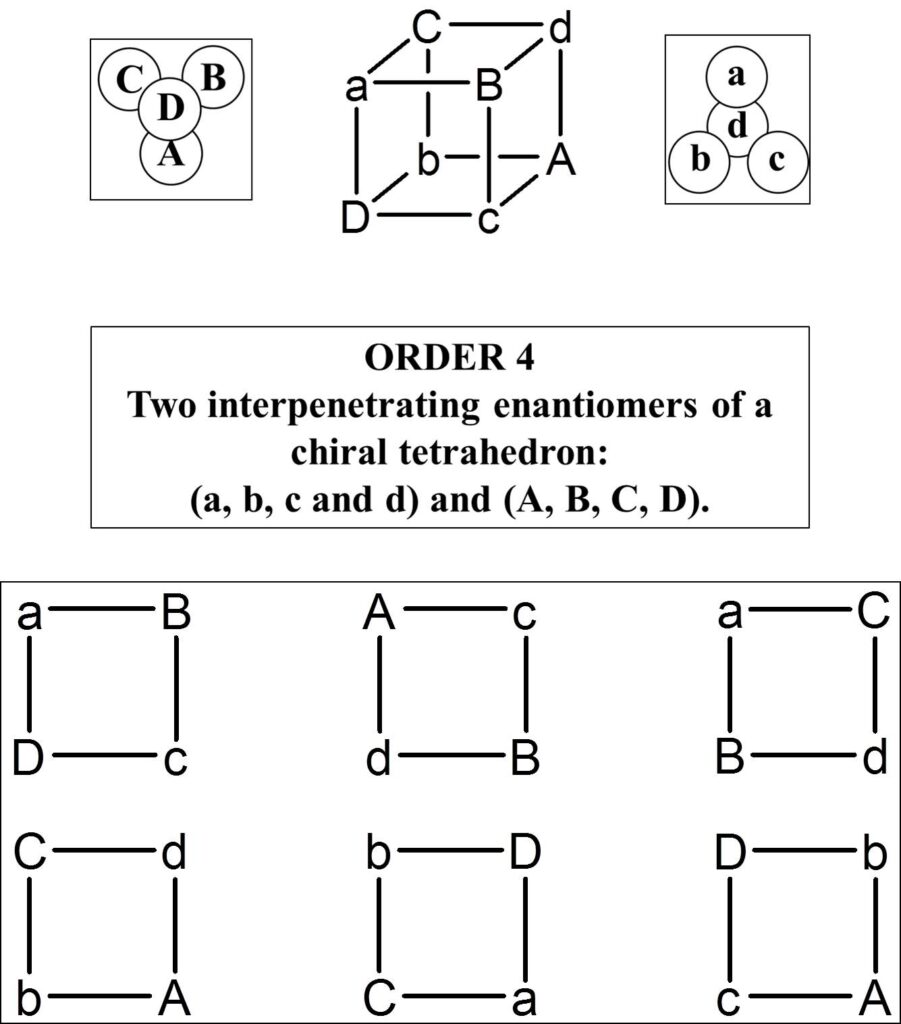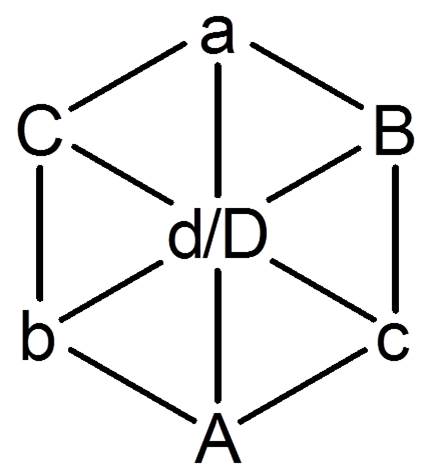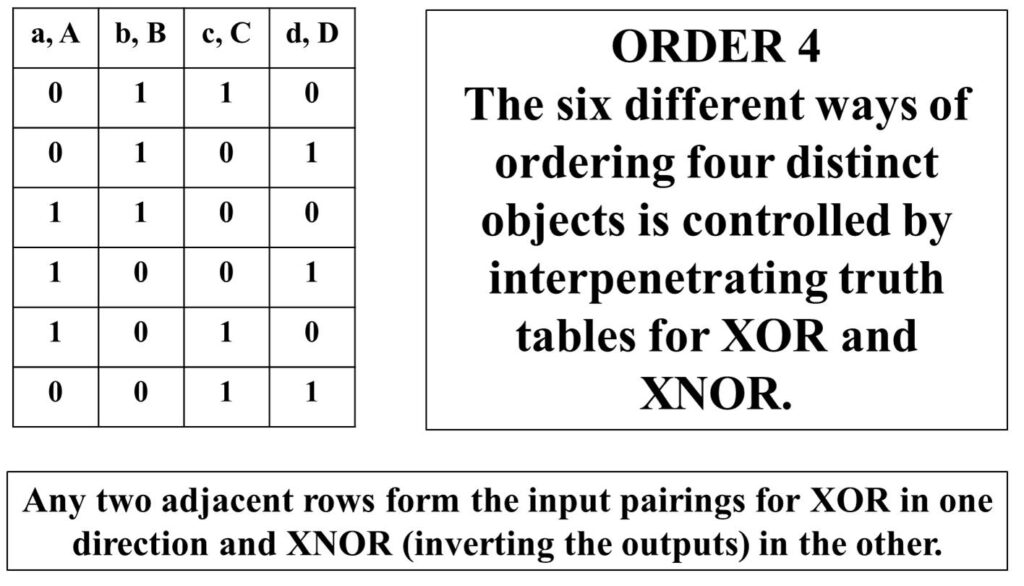The left and right hands are mutually exclusive. They are chiral (mirror symmetric) objects. The distinction between them is conventionally drawn between clockwise and anticlockwise rotation of a ring: the thumb (a), first finger (b) and second finger (c) of the right hand being ordered clockwise in a ring and those of the left hand (a, b and c) anticlockwise in another ring. Chiralkine instead draws a distinction between what each object is and is not: each thumb, first finger and second finger is defined relationally as itself not its mirror opposite (a, A; b, B and c, C).
It is as if the thumbs, first fingers and second fingers of the right and left hands have shared their identities, yet retained a distinction between them, so that they lie together on a single ring (a B c A b C).
This subtle change opens up a new way to process information about relationships digitally (in 1s and 0s) that enables the two sides of a relationship to be treated mirror symmetrically. Simply code each cube face by keeping the letters in alphabetical order and assigning 1 to an upper case letter and 0 to a lower case letter and control digital interactions using the truth tables for Boolean XOR and XNOR.



